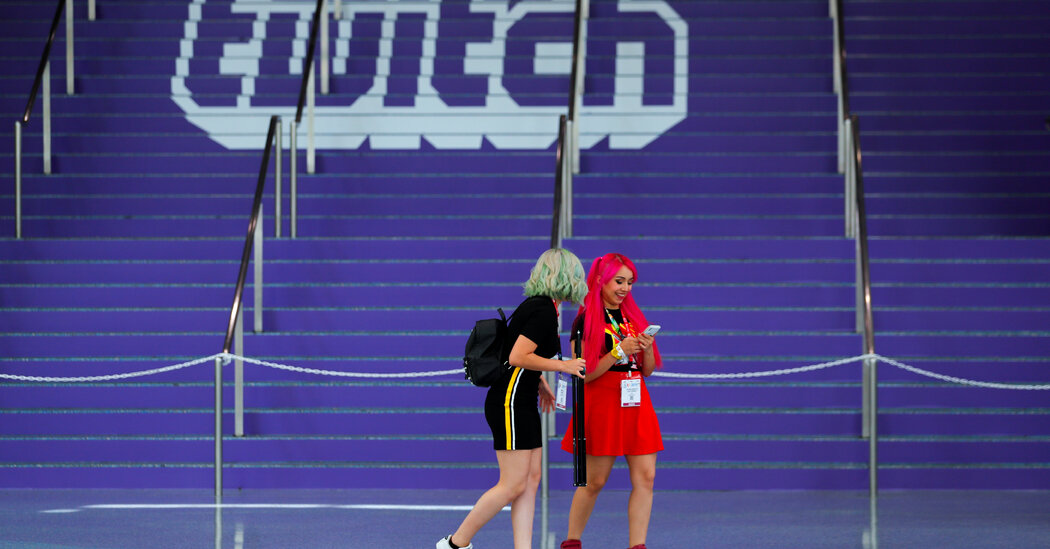Twitch, the livestreaming platform popular among video game players, unveiled new guidelines on Wednesday aimed at cracking down on hateful conduct and sexual harassment on its site.
The site, which is owned by Amazon, said it had broadened its definition of sexual harassment and separated such violations into a new category for the first time so it could take more action against them. Under the new guidelines, Twitch will ban lewd or repeated comments about anyone’s physical appearance and expressly prohibit the sending of unsolicited links to nudity.
The company also said it would prohibit streamers from displaying the Confederate battle flag and take stricter action against those who target someone’s immigration status. Violators could receive warnings, temporary suspensions or permanent bans from the platform.
Twitch said the changes were its most significant policy updates in almost three years. They followed a nearly yearlong review that included consultations with streamers and academics who study cyberbullying, diversity and inclusion, the company said. The new standards will take effect in January.
“We need to ensure that anyone who shows up on Twitch feels safe and confident that they can broadcast without harassment,” Sara Clemens, Twitch’s chief operating officer, said in an interview. “There are constituents on Twitch, particularly underrepresented minority groups, who experience a disproportionate amount of harassment and abuse online.”
For years, Twitch has been dogged by claims that viewers could easily harass streamers with sexually explicit comments and threatening messages. On the platform, people can broadcast themselves playing video games or just talking, and their audiences can interact with them through a text chat in real time.
The company created stricter policies in 2018, but came under fire over the summer after dozens of gamers and streamers — mostly women — publicly shared that they had been sexually harassed and assaulted by others in the gaming industry, including on Twitch.
In June, streamers organized a one-day “Twitch blackout,” when some abstained from broadcasting on the platform to pressure it to investigate and address the accusations. The company said at the time that it would permanently ban severe offenders and improve its handling of reported harassment.
That same month, Twitch temporarily suspended President Trump’s Twitch channel for “hateful conduct.” The channel had streamed his rallies, which included comments that Mexico sent drugs, crime and rapists over the border, and that a “very tough hombre” broke into a woman’s house.
Other social media platforms, such as Facebook and Twitter, have also been under pressure to remove hate speech and misinformation.
Twitch has had a banner year. With the coronavirus pandemic forcing people to remain indoors, many have sought out online entertainment such as streaming video games. Twitch now averages 26.5 million daily viewers, up from 17.5 million at the beginning of the year, it said.
As the community has grown and become more global, Ms. Clemens said, it is important for Twitch to ensure that its policies reflect societal norms.
Many streamers earn a living from Twitch, with some making more than $1 million a year through subscriptions, donations and advertisements on the service. Because of that, Ms. Clemens said, Twitch users should keep a “workplace-style” approach in mind when considering what comments might amount to harassment.
Other changes include codifying and spelling out more explicitly the kinds of content and actions that were already unofficially prohibited. These include blackface, doxxing — publishing personally identifying information like someone’s phone number online — and hate group propaganda, such as symbols associated with the Nazi Party or white supremacist groups.
Twitch said it did not have policies on other categories of toxic content, such as coronavirus-related misinformation or the baseless QAnon conspiracy theory. But the company said such content could fall afoul of its policies preventing hateful conduct and the encouragement of self-destructive behavior.
[ad_2]
Source link


